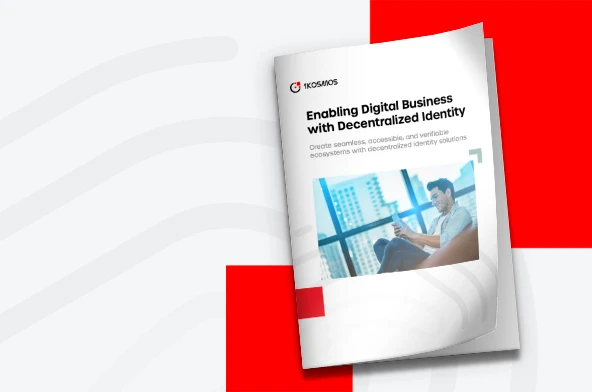Distributed Ledger: A Comprehensive Insight for Organizations
A Distributed Ledger stands at the forefront of modern database technology, a shared database spread across many sites, countries, or institutions. This innovative approach to data management records transactions while ensuring every participant within its network has access to a shared, uniform version of this information. As industries evolve and the need for transparent yet secure transaction methods surges, the relevance and significance of this technology amplify.
Historical Context
Origins and evolution of ledgers in accounting and finance: The concept of ledgers is not new. Historically, they’ve served as repositories for financial information, recording and keeping track of transactions in a physical, centralized manner. This method, while foundational, had limitations regarding accessibility, transparency, and real-time updates.
The shift to digital ledgers: The digital age revolutionized data management. Digital ledgers introduced speed and immediate access. However, they also confronted us with challenges concerning security, transparency, potential data manipulation, and reliance on central intermediaries.
The emergence of blockchain and DLT: Recognizing the pitfalls of digital ledgers, the concept of blockchain was birthed, later leading to the broader realm of Distributed Ledger Technology (DLT). This decentralized approach promised to address previous challenges, adding layers of security, transparency, and peer verification without relying on a central authority.
What is Distributed Ledger Technology (DLT)?
Detailed definition: DLT is a decentralized system that facilitates recording transactions across many computers. It differs from traditional databases because it lacks centralization, ensuring consistent data across its network without relying on a singular control point.
Difference from traditional ledgers: While traditional ledgers hinge on a single entity (like banks or regulatory authorities) for validation, DLT operates using consensus algorithms. These algorithms ensure that all network participants agree on the recorded data’s validity, thus removing intermediaries and providing a democratized system.
Key components and features: Key features making DLT particularly attractive include decentralized control, data immutability, cryptographic data security, and consensus-driven validation mechanisms.
Types of Distributed Ledgers
Blockchain vs. other types: Though often used synonymously with DLT, blockchain is a subset. It sequentially links data, with blocks chained chronologically. However, other DLT structures, such as Directed Acyclic Graphs (DAGs), diverge from this chained data model.
Public vs. Private Ledgers: The difference lies in accessibility. Public ledgers, like the one used by Bitcoin, are accessible to all, allowing anyone to participate. Conversely, private ledgers limit participation and are often used within a single organization.
Consortium Ledgers: This is a middle ground between public and private, controlled by a pre-selected group of nodes or participants, usually multiple organizations collaborating for common objectives.
Benefits of Using Distributed Ledger
Enhanced security and immutability: DLT employs sophisticated cryptographic techniques. With its decentralized nature, altering recorded data becomes arduous, ensuring data integrity.
Transparency and traceability: Every transaction is visible to participants, guaranteeing unparalleled transparency, which aids in trust-building and ensures a clear audit trail for every entry.
Reduction in transaction costs and intermediaries: The consensus-driven model of DLT removes the need for intermediaries, reducing costs and potential bottlenecks and creating a more streamlined transaction process.
Increased efficiency and speed: Without intermediaries and with real-time ledger updates, transaction times are drastically reduced, enhancing efficiency.
Real-World Applications
- Identity Verification: Distributed Ledger Technology (DLT) fortifies identity verification processes against theft and fraud. By decentralizing personal information and employing robust cryptographic techniques, DLT enhances security, reduces vulnerabilities, and puts individuals in greater control of their data, thereby diminishing the risks of unauthorized access and manipulation.
- Supply Chain: With a need for authentic, traceable product histories, DLT provides a solution, ensuring real-time tracking and verification of goods at every stage, from origin to end-user.
- Smart Contracts: These self-executing contracts embed the terms of the agreement within lines of code, making them automatic, transparent, and irreversible
- Voting Systems and Governance: DLT can overhaul traditional voting systems, introducing enhanced transparency while reducing fraud potential and increasing citizen trust.
Challenges and Limitations
- Scalability Concerns: As transactions accumulate, the size of the ledger grows. Processing and validating these transactions can become slower over time.
- Integration with Existing Systems: Organizations with established infrastructures may find transitioning to a DLT-based system daunting, given integration complexities and potential resistance to change.
- Regulatory and Governance Issues: DLT’s decentralized nature might clash with centralized regulatory frameworks, making universal adoption challenging.
- Potential Risks and Vulnerabilities: Though secure, as a relatively young technology, undiscovered vulnerabilities could be present, which might be exploited by malicious actors.
The Future of Distributed Ledgers
- Integration with IoT and AI: As devices become more innovative and connected, merging DLT with IoT and AI can create interconnected systems where transactions are secure and intelligent.
- Industry Disruption: The applications are vast, from healthcare patient record management to real estate property registries. DLT stands to revolutionize various sectors, enhancing transparency and efficiency.
- Societal Implications: As decentralized systems become more prevalent, power dynamics might shift, paving the way for more community-driven, democratized structures.
Distributed Ledger Technology is revolutionizing the organizational fabric, presenting opportunities and challenges equally. Its potential is vast, reshaping industries and societal structures alike. Staying informed, adaptable, and proactive is crucial as we move forward in this digital age. Organizations must seize the moment, delving deeper into DLT’s world, collaborating with experts, and considering its implementation for a brighter, more efficient future.
